What can you plant next to blackberries?

Most often, personal plots are not large in size, but how much you want to plant on them. Fruit trees, berry bushes, grapes, flowers - all these crops are considered traditional for summer cottages. Many people prefer to grow blackberries on their site as well.
It can be called a rather whimsical culture, so it is important to choose the right place for planting, as well as neighbors with whom it would interact well. The article will discuss how compatible blackberries are with raspberries, currants and other shrubs and trees, as well as grapes.
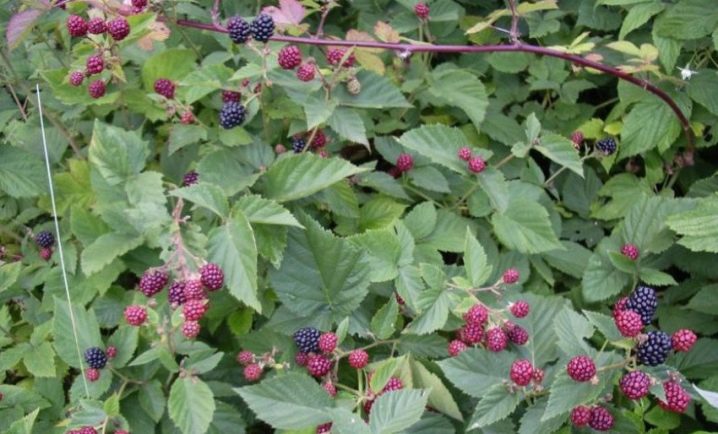
Neighborhood with shrubs
Blackberry belongs to a number of plants belonging to the pink family. Cultivated species began to grow in the middle of the 19th century, when thornless varieties were developed through the efforts of American breeders in collaboration with farmers. There are currently three varieties of blackberries.
- Nesskaya, also called kumanika. It grows in the form of a shrub plant with erect shoots, reaching a height of up to 4 meters. A distinctive feature of this species is the presence of sharp thorns on the branches. Kumanik is resistant to severe frost. Berries weigh up to 4 grams.
The presence of root growth allows them to be used for reproduction or planting.
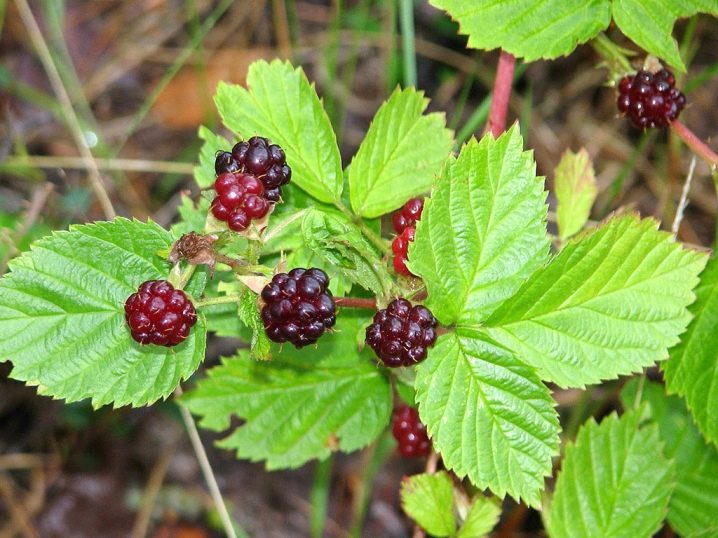
- Pleat-shaped, or dewdrop. This creeping shrub also has a large number of thorns along the entire length of the branches. The whitish blackberry can be called one of the most productive species. During fruiting, the weight of the berries often reaches 12 grams.
The root growth does not have a dew-grass, therefore, its reproduction occurs by separating the layers. For this, the upper part of the shoots is instilled.

- Semi-creeping... The plant is more like a dewdrop, but unlike it, it does not have thorns on the shoots. Usually the yield is medium, the weight of the berry is about 5 grams. This species reproduces in two ways: by separating the overgrowth or digging in the upper part of the shoot.
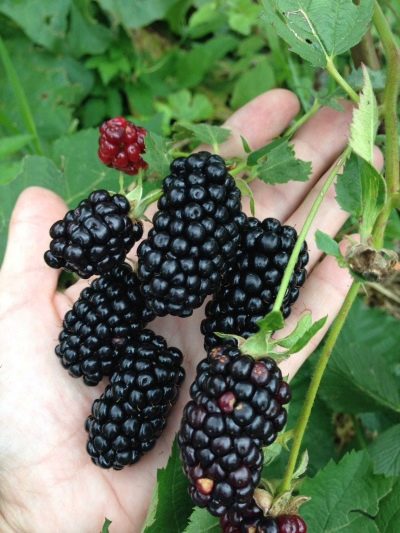
An important factor when growing blackberries is the location of the plant. Although blackberries have good resistance to drought or extreme cold, they are more demanding in choosing a place for planting. Wetlands are considered unsuitable for this species, and bushes should not be planted in the lowland due to the high risk of stagnation of water in the ground. Blackberries are more suitable for areas located on an elevation, for example, a hill. With an excess of moisture, the root system will soon begin to rot, in the future this will lead to the death of the entire plant.
Sandy loam soils or loam, with an acidity level of 6 pH, will be the best option for this crop. Given that the plant is light-loving, places well-lit by the sun, on the south or south-west side, are suitable for this culture. In summer cottages, a line is usually chosen for this along the fence, retreating from the fence about 1 meter.
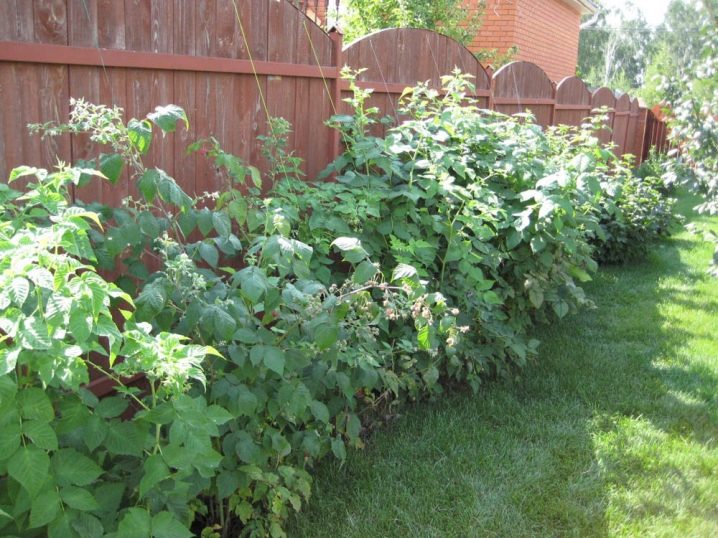
When planting blackberries, few know how this culture will interact with other plants on the site, and how compatible it will be with them.
Usually gardeners do not think about this, although the wrong choice of neighborhood often leads to a decrease in yield, and sometimes to the death of the entire plant.
Given that many gardeners prefer to grow currants, raspberries, gooseberries and other fruit and berry crops on their plots, it is very important to understand how they suit blackberries, and whether they can be planted nearby.
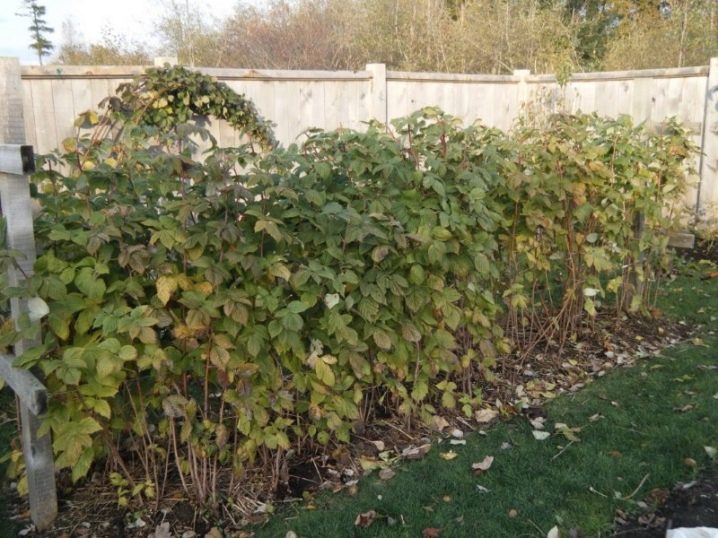
Raspberries
Raspberries get along well with blackberries, given that they are classified as one species. These crops require similar habitats. Even in small areas, they can be planted in close proximity to each other without fear of cross-pollination.
Such a neighborhood has certain advantages, but there are also disadvantages, however, with proper care, one can hope for good fruiting of both crops.
The advantages of this neighborhood include:
- compact fit;
- the possibility of joint treatment of plants from various diseases, pests;
- feeding them with the same types of fertilizers.
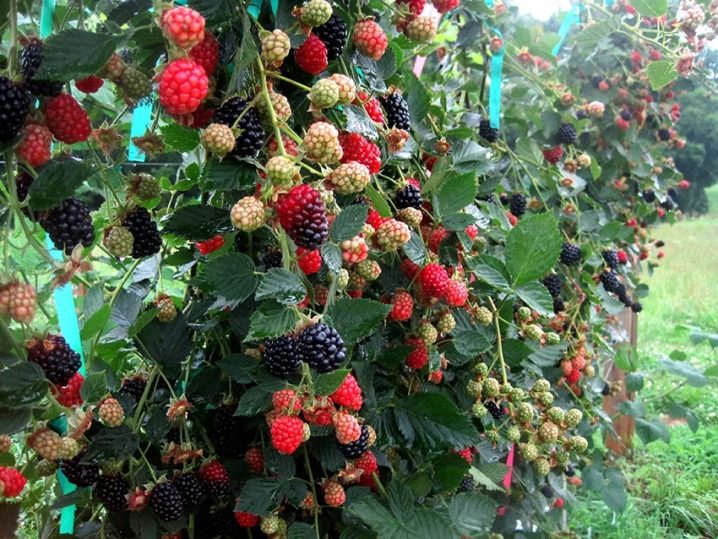
As for the disadvantages, the main disadvantage of the proximity of cultures is the tendency to proliferation. Planting crops too close can make pruning difficult. To prevent the branches from intertwining, it is better to maintain a distance of about 1.5 meters between crops. And it is also recommended to install limiters made of plastic, iron or slate between them, burying them to a depth of half a meter.
In small areas, if it is impossible to devote a lot of space to each culture, it is advisable to choose varieties of blackberries that do not form shoots. These include Thornfree, Loch Ness, Navajo or Giant, plus black raspberries... Taking into account the fact that the aforementioned varieties do not relate well to low temperatures, it is better to collect their branches in a bunch for the winter and bend them to the ground, and sprinkle the bushes themselves with fallen leaves.
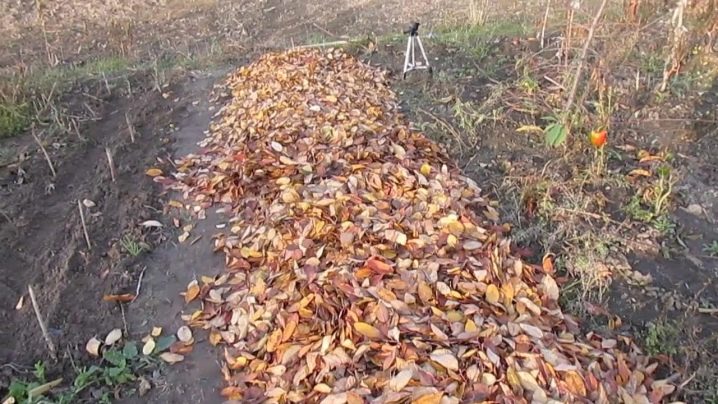
Throughout the season, blackberries regularly bear fruit, many can enjoy delicious sweet berries for 2 months or more. Thanks to special pruning, summer residents manage to make this period even longer, capturing the entire summer season. During the ripening process, it is important to remove the fruits from the bush in time, doing this at least 2-3 times a day, otherwise overripe berries can lead to diseases. Choosing thornless varieties will help make harvesting more comfortable and convenient.
Blackberries, like raspberries, can fully grow and develop in natural conditions, without additional care. But in favorable conditions, the culture will give a more powerful crop with large fruits. Achieving a good harvest will allow planting crops on loamy and sandy loam soils and the use of organic fertilizers.
Answering the question whether raspberries are suitable as a neighbor for blackberries, you can give an affirmative answer. Moreover, due to the variety of varieties, they can choose the most suitable combinations.
But so that the raspberry does not suppress its "neighbor", it is necessary that the raspberry does not exceed the size of the thicket of blackberries.
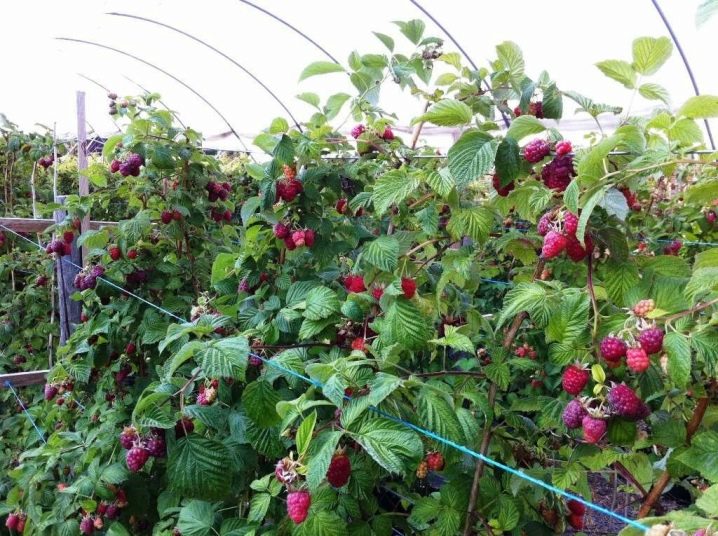
Currant
Currants will not work as a neighbor for blackberries. For black and red currants, the proximity of a culture that gives abundant growth can be destructive. The root system of a growing shrub will require a large amount of nutrients from soil and moisture, which will lead to a lack of them for currant bushes. Such a neighborhood of currant bushes with dewdrops is especially dangerous.
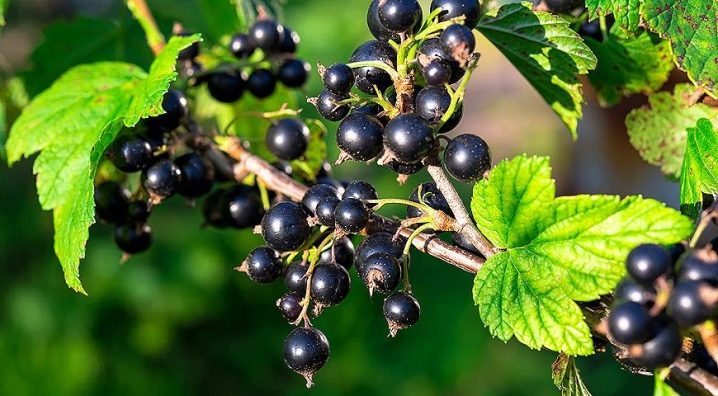
But a sufficient distance between crops and the installation of partitions will allow crops to fully develop in one area and bear fruit successfully.
Honeysuckle
If you want to plant blackberries and honeysuckle on the site, you should give preference kumanika, an upright variety with harsh branches... Otherwise, the proximity of these crops will be undesirable, since young bushes will require sufficient space for their development and fruiting.
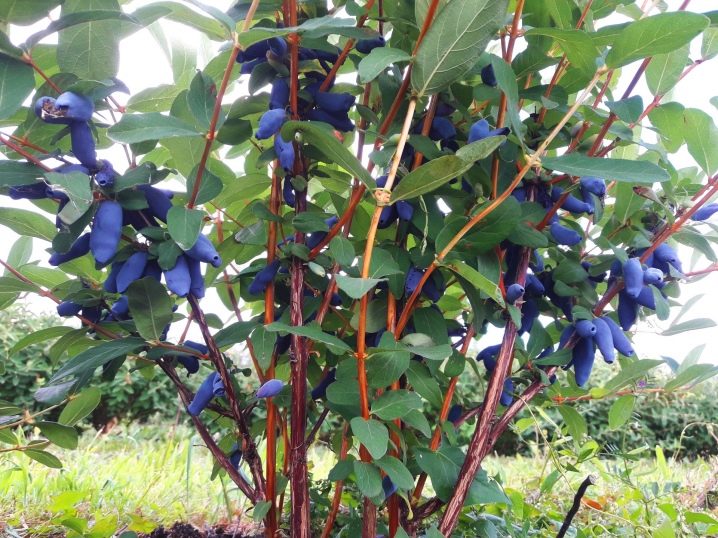
Gooseberry
Companions such as gooseberries and blackberries... Just like the currants, it will be quite easy for him to "get along" with a neighbor.Gooseberry among other fruit and berry crops is considered one of the most suitable options for the neighborhood. These crops can be planted even in the same row, but it is still not recommended to alternate them.
It is better to choose a suitable place for the plants by planting them in adjacent rows.
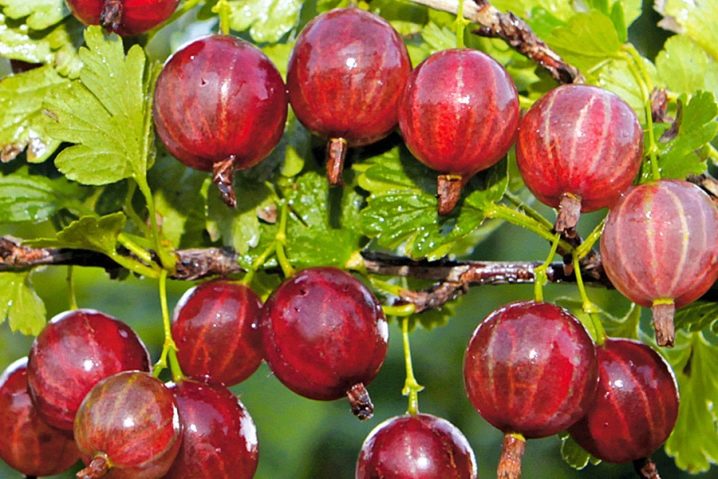
Other
When choosing a suitable "neighbor" for blackberries, it should be taken into account that certain plants have the ability to slow down the growth of the crop, or completely stop it. Ideal compatibility can be achieved only when planting crops of the same type, where the apple tree will coexist with the apple tree, the pear with the pear, and the cherry with the cherry.
- It is strongly not recommended to plant blackberries with strawberries together on the site.... With such a commonwealth, cultures will begin to be amazed by their common pest, the weevil.
- Blueberries are still a rare guest in the garden, and compatibility with other crops is not well understood.... Considering that the plant does not like shady areas and prefers to grow on soils with a sufficient amount of nutrients, it is better to plant blueberries, departing from the blackberries by at least 1.5-2 meters.
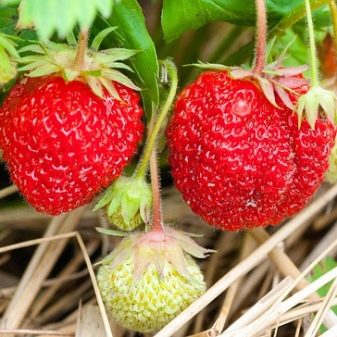
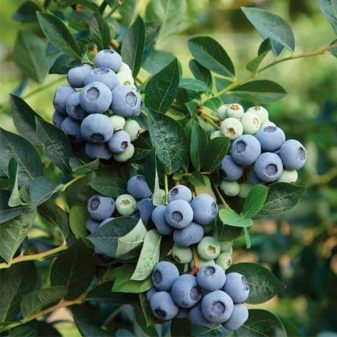
Grape compatibility
Having planted a seedling with grapes, in the future, you may encounter a problem associated with the intertwining of shoots. The presence of long vines will interfere with the tangling of the blackberry shoots. To avoid this, you will need to make constant pruning and pruning.
Good results can be obtained by establishing trellises that protect both cultures from their interweaving.
It is worth noting that these plants have a dense crown, which makes it difficult for the sun's rays to penetrate. For light-loving cultures, the sun color is extremely necessary, its lack will lead to the appearance of diseases and other troubles.

Growing plants on separate trellises will reduce the likelihood of this problem occurring.
Blackberry and grape trellis are able to create sufficient shading, this makes it possible to plant another suitable crop in the aisle. The only difficulty in such a neighborhood is the need to protect the planted crop from pesticides when spraying trellises. It will be protected by using a covering material in the form of a film or spunbond.

Fruit trees and blackberries
It is not recommended to plant fruit and berry crops in close proximity to fruit trees. In addition, their crown will create a shadow that is extremely undesirable for these plants.
Planting blackberries near fruit trees will reduce yields. Neighbors such as plum and pear can become not only unfortunate, but also dangerous. They have a powerful root system, which requires much more moisture and, as a result, nutrients, which it will take from the shrub.
Due to the fact that blackberries will enrich the soil with nitrogen, an apple tree is suitable for it as a neighbor, but only if the distance between them is correctly maintained.
It is especially not recommended to use black walnut as a companion for this berry crop.
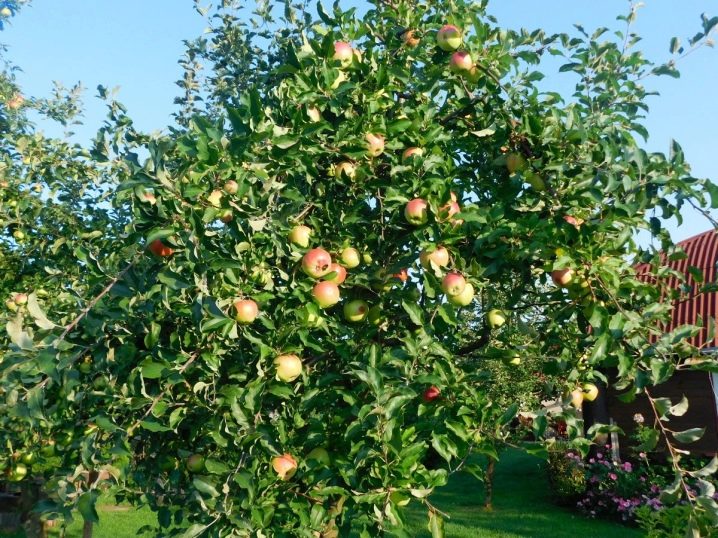
Neighborhood with vegetables
It is usually customary to grow vegetables separately from berry bushes, so the compatibility of vegetables with blackberries has not yet been fully studied by agronomists.
According to reports, this crop may have a favorable neighborhood with tomatoes and garlic. Near a garden with garlic or tomatoes, hybrid varieties that were obtained as a result of crossing them with raspberry bushes will feel good.
According to experienced gardeners, beans will feel good next to blackberries, they will not "choke", while they can serve as a support for young shoots.

Planting with other crops
The compatibility of different cultures is a relative concept. Various factors should be considered, including what soil the plants grow on, the size of the plot, watering, lighting, the use of suitable fertilizers, and more.
In addition to vegetable and fruit crops, blackberries can get along well with ornamental plants and flowers.
So, a peony can act as a companion for a shrub, especially if the culture is in the form of a hedge. Do not forget that peonies grow strongly in breadth. The correctly chosen distance from the bushes to the neighbor should be about 1 meter. This will allow you to easily get to the blackberry bushes, while providing access to the peonies for mulching, loosening.

You should not arrange flower lawns next to blackberry thickets, otherwise you will have to regularly remove shoots from the lawn, which will negatively affect the integrity of the plants.
The implementation of all agricultural techniques will allow you to avoid possible mistakes when growing berry crops. Choosing the right neighborhood will help increase the harvest, accelerate the ripening of berries. Adhering to the recommendations of agronomists, and choosing the most successful neighborhood options for blackberries, you can achieve the full development of a culture that will delight you with a decent harvest of large juicy vitamin fruits.
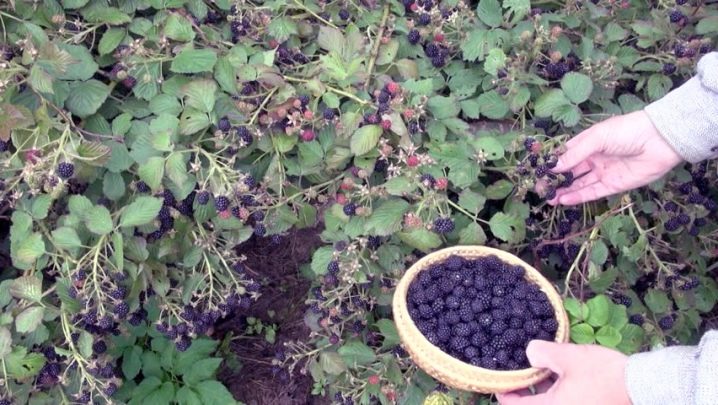













The comment was sent successfully.